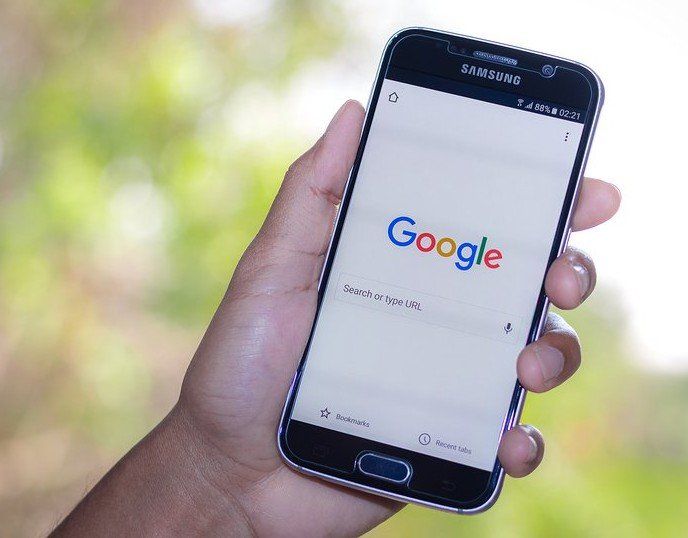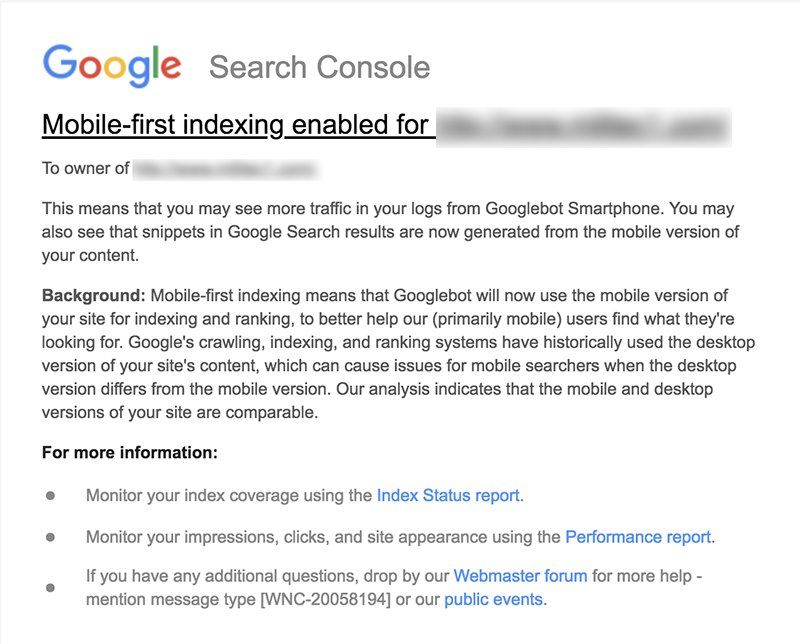Need help with your online presence? Call 301-481-9979
Google's Mobile-First Indexing

Because most people use Google as their search tool when searching from a mobile device, Google has moved to Mobile-First Indexing. What this means is that the mobile version of your website becomes the starting point for what Google includes in their index and the baseline for how they determine rankings. This replaces crawling the desktop version of a website.
For over a year Google has been experimenting and testing Mobile-First and just recently started migrating sites that follow the best practices for mobile-first indexing.
Because it will take time to develop a mobile-first index, Google will continue to have a single index to deliver search results. Even though Google will continue to use the desktop version index, they will be using the mobile versions of content.
We’ve started to receive notices that some of our client’s websites have migrated to mobile-first indexing via Google's Search Console. Site owners will see significantly increased crawl rates from the Smartphone Googlebot. And Google will show the mobile version of pages in Search results and Google cached pages.

No need to worry if your website isn't in this first move to indexing. Mobile-first indexing is about how Google gathers content, not about how content is ranked. Content gathered by mobile-first indexing has no ranking advantage over mobile content that’s not yet gathered or desktop content. Likewise, if you only have desktop content, you will continue to be shown in the Google index.
Google will continue to encourage webmasters to make their content mobile-friendly as they continue to evaluate all content in their index -- whether it's desktop or mobile – to determine its mobile-friendliness.
Page Load Speed
Page load speed has been a topic for some time and recently Google announced that beginning in July 2018, content that's slow to load may not perform well in search results for both desktop and mobile. Google looks at page load speed when determining a site's visibility in organic search results on mobile devices.
What's the page load speed goal?
Many internet users expect a page to load in 2 seconds or less. As page load time increases, so does the abandon rate. Studies show that:
- 9.6 of visitors leave (bounce) when a page speed is more than 2 seconds.
- 32.3% of visitors bounce when page load speed is 7 seconds.
- On average, visitors will visit 5.6 pages more when page load time is 2 seconds compared to 8 seconds. So as you can see, the bounce rate increases when page speed is slower.
If your website includes eCommerce, you should also be aware that about 79%
of consumers who have experienced poor web site performance say they won’t return to the site to make a purchase. And about 44%
of those that had a bad experience will share it with friends and family,
So if your website isn't loading quickly, there are a number of things that can be done to improve its load speed. We can help by optimizing your web site for search
which includes improving page load speed.
CONTACT US
© 2024
All Rights Reserved | Oasis Grafx
All photos, designs, and content appearing on the Oasis Grafx website are the exclusive property of its owner. Any reproduction of any content (photo, copy, video or designs) in full or in part is prohibited without the owner's express authorization in the form of written consent.
